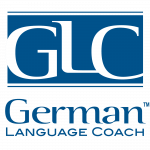
Being able to understand grammar terminology is crucial. But many people learning German find it challenging to come to grips with it. In 4 weekly instalments, we are explaining in simple terms the most important terminology that you may want to know before attending German lessons or classes:
The noun
A noun is a person, place, thing or idea. In German, all nouns are capitalised. If something in the middle of a sentence is capitalised, it is a noun or a word acting as a noun (i.e. a name).
The pronoun
A pronoun replaces a noun in a sentence and refers back to a noun that was previously mentioned (e.g. when we are talking about John, we can say “he” or “him” instead of using his name again). It does the same job in a sentence as a noun and can be the subject, direct object, indirect object or the object in a prepositional phrase.
The subject
The subject of a sentence is always a noun or pronoun. It is the person or thing that does the action of the verb in the sentence.
The verb
The verb is the action word of the sentence and describes what is being done. In German, the conjugated verb takes the second position in a simple sentence or main clause. In other clauses (with subordinating conjunctions like dass or weil), the verb will be at the end of that clause.
The direct object
The direct object is the “do-ee” of the sentence, meaning the object to which something is being done. It, too, is always a noun or pronoun.
The indirect object
The indirect object is a noun or pronoun that answers the question ‘to whom’ or ‘for whom’ something is being done – the beneficiary of the verb.

One thought on “German grammar terminology (part 1)”